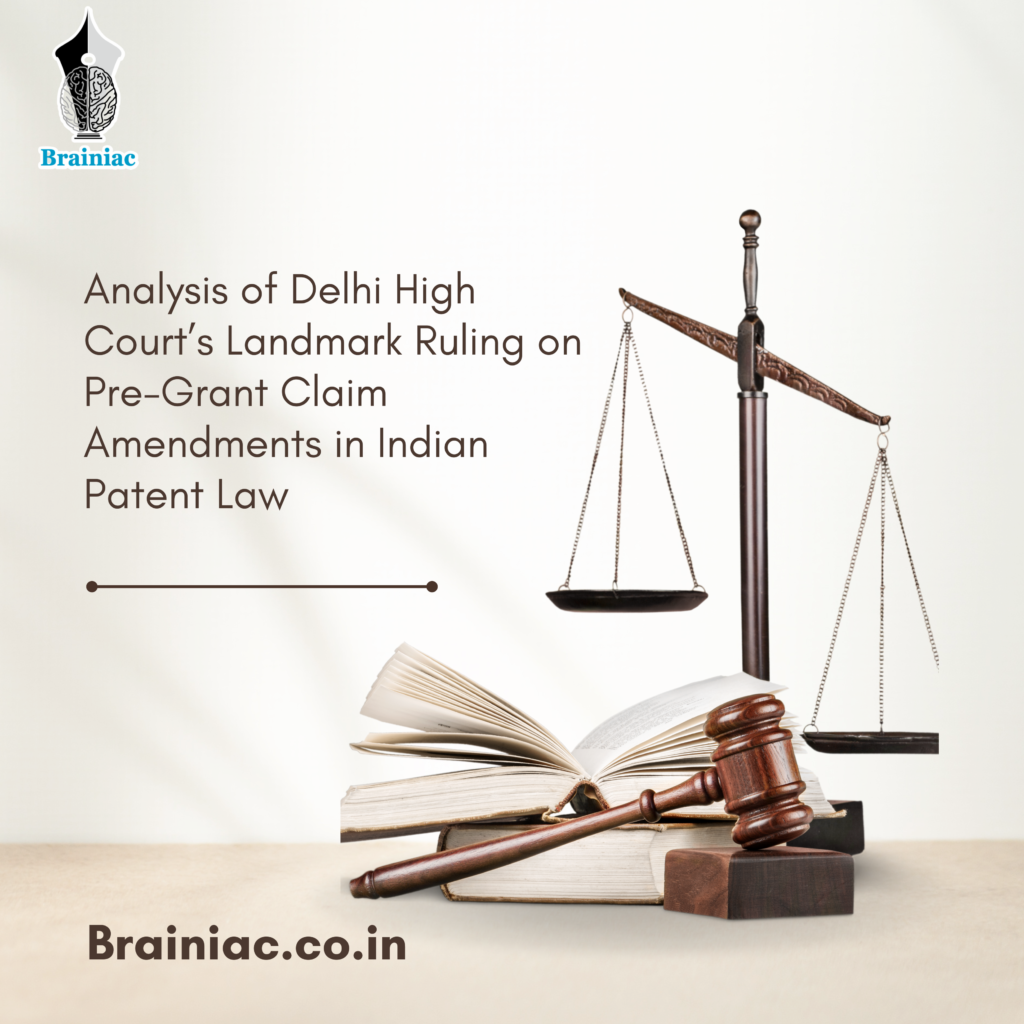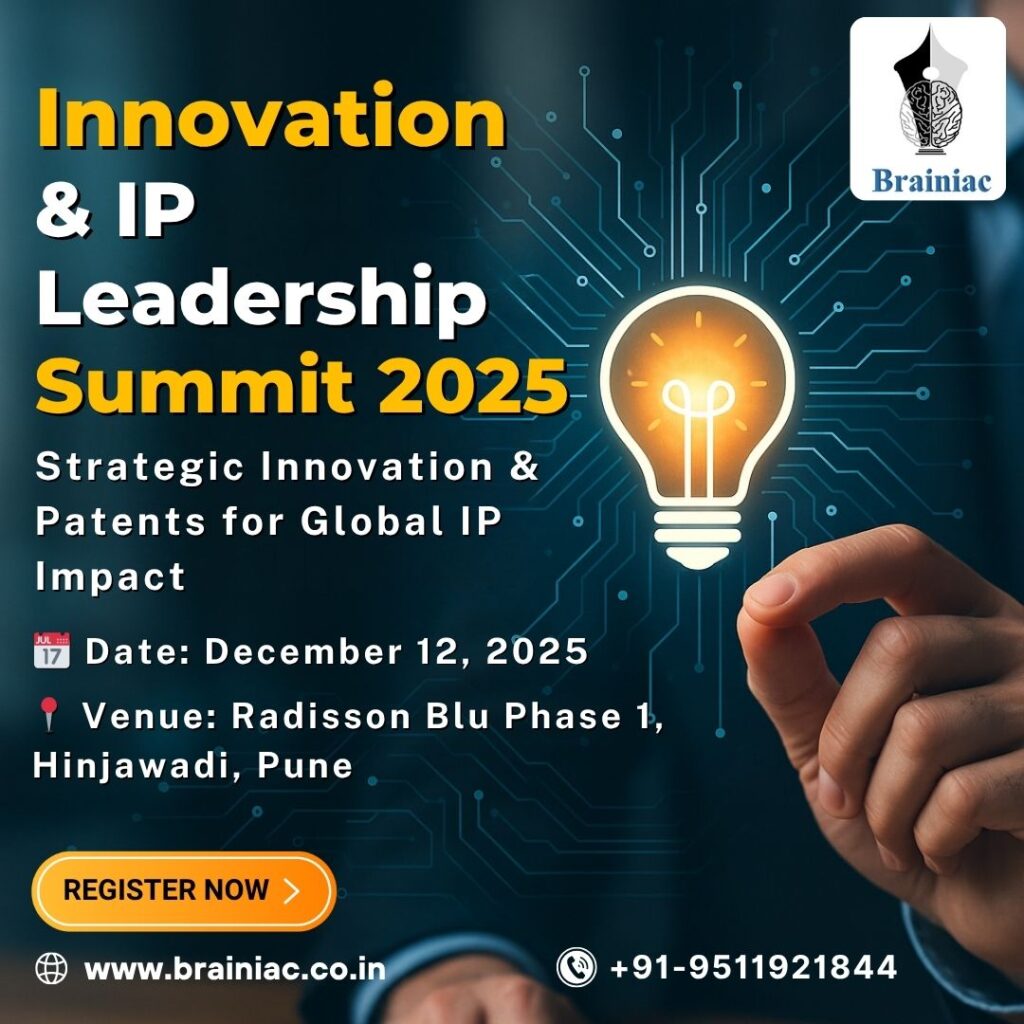Introduction
A recent decision by the Delhi High Court in the case of Allergan Inc v. The controller of Patents has caused a notable change in how Section 59(1) of the Indian Patents Act, 1970—which deals with amending patent claims before they are granted—is interpreted and used in the dynamic field of Indian patent law. This article examines the key elements of this groundbreaking case and considers the potential repercussions for the patent system and its practical use in India.
Under Section 59(1) of the Patents Act, 1970, amendments to patent claims are subject to specific restrictions and conditions. Here’s an explanation of the types of amendments that can be made to the claims of a patent based on this provision:
Disclaimer: Amendments to claims can be made by way of a disclaimer. A disclaimer is a statement that restricts or disclaims a specific part of a claim. This is often used to exclude certain subject matter from the scope of the claim.
Correction: Amendments to claims can also involve corrections. These corrections are typically aimed at rectifying errors or inaccuracies in the claims. Such corrections ensure that the claims accurately represent the invention as intended.
Explanation: Amendments may include explanations to clarify the language or terms used in the claims. These explanations can help in ensuring that the claims are clearly understood by those skilled in the relevant field.
Incorporation of Actual Fact: The primary purpose of claim amendments allowed under Section 59(1) is the incorporation of actual facts. This means that any changes made to the claims should reflect something that is true and correct but may not have been accurately represented in the original claims.
The ALLERGAN INC v. The Controller of Patents case delves into the application and interpretation of these conditions in the context of pre-grant claim amendments.
Facts of the Case
The appellant in this instance submitted a national phase patent application in India in order to obtain protection for “Intracameral Sustained Release Therapeutic Agent Implants.” The first claims were written in the form of a “method of treatment,” defining the processes of a procedure as well as the makeup of the intracameral implants employed.
However, complications arose during the examination process when the Controller issued a First Examination Report (FER) containing objections to these claims. The Controller’s main contention was that these claims were not eligible for patent protection, citing Section 3(i) of the Patents Act, 1970, which prohibited the patenting of methods of treatment for humans or animals. In response to these objections, the appellant decided to make amendments to their claims. Their aim was to shift the focus of the patent application from the method of treatment to the intracameral implants themselves.
The Controller objected to these amendments, arguing that they lacked support in the originally filed claims and international (WIPO) claims. The Controller contended that the new claims fell outside the scope of the original claims and subsequently rejected the patent application. Aggrieved with the Controller’s refusal, the Appellant filed an appeal before the Delhi High Court.
Issue Before the Court
The primary issue before the Delhi High Court was whether the originally filed “method of treatment” claims may be changed into “composition” claims and if these changes were permitted under Section 59(1) of the Patents Act.
Arguments of the Appellant
The appellant maintained that the original claims should be upheld because they were changed from “method of treatment” claims to “composition” claims. The appellant emphasised that the whole specification and the original claims supported the composition claims as changed.
Furthermore, the appellant emphasised that it was unrealistic to anticipate that the original claims would be patentable in each of the named nations due to variations in the patentability regimes between those nations, such as the United States and India. In light of the surrounding circumstances, the appellant argued that the revisions were permitted by Section 59(1) of the Act and were within the purview of the original claims.
Arguments of the Respondent
The respondent argued that the amendments sought by the appellant were not allowable under Section 59(1). The respondent contended that the scope of amendments to claims is more restricted than that of the specification itself. Additionally, the respondent cited Section 10(4)(c) of the Act, emphasizing that complete specifications should conclude with the actual claim or claims defining the scope of the invention.
The respondent maintained that considering pre-amended complete specifications when evaluating claim amendments was impermissible and would conflate the claim and the specifications, contradicting Section 10(4) of the Patents Act.
Observations and Decision of the Court
After careful deliberation, the Delhi High Court made several crucial observations and arrived at a significant decision:
Integration of Claims and Specifications: The Court underscored that claims and complete specifications in a patent should be viewed as an integrated whole. Dichotomizing these elements runs counter to fundamental principles of patent law. (Merck Sharp & Dohme Corporation v. Glenmark Pharmaceuticals)
Legislative Intent: The Court making the reliance upon the case Tony Mon George v. Controller General of Patents, Designs & Trademarks, acknowledged that the legislative intent was to prevent the introduction of new subject matter through amendments. Amendments should be allowed when they restrict claims to disclosures already present in the specification.
Support in Original Claims: The Court pointed out that the composition specified in the original filed description had been explicitly described in the modified set of claims. The amendments concentrated on the same implants that were first revealed rather than introducing any entirely new topic matter.
Liberal Approach to Amendments: The Court referenced previous judgments and the Ayyanagar Committee Report, which advocated a more liberal approach to amendments before acceptance. The Court held that this approach aligned with the legislative intent.
Global Patenting Considerations: The Court acknowledged the practical challenges of patenting inventions across multiple jurisdictions. It recognized that it’s impractical to expect original claims to meet the patentability criteria of all countries, especially when patent regimes differ.
Based on these factors, the Delhi High Court concluded that the appellant’s changes, which involved switching from “method of treatment” claims to “composition” claims, fell within the purview of the original patent specification and claims. The Patents Act’s Section 59(1) argument was rejected by the Court as unpersuasive.
Way forward
The ruling in the ALLERGAN INC v. The Controller of Patents case has far-reaching implications for patent law and practice in India. It signals a shift toward a more balanced and integrated approach to understanding and evaluating pre-grant claim amendments.
This decision is expected to influence the interpretation and application of Section 59(1) by patent authorities and examiners, potentially leading to a more accommodating environment for patent applicants seeking amendments for patentability.
In conclusion, the Delhi High Court’s interpretation of Section 59(1) in the ALLERGAN INC v. The Controller of Patents case marks a significant departure from previous strict interpretations. This ruling aligns with the evolving needs of patent applicants and promotes a more pragmatic approach to patent law in India.



